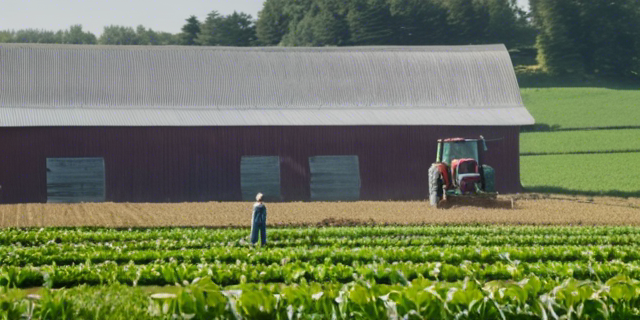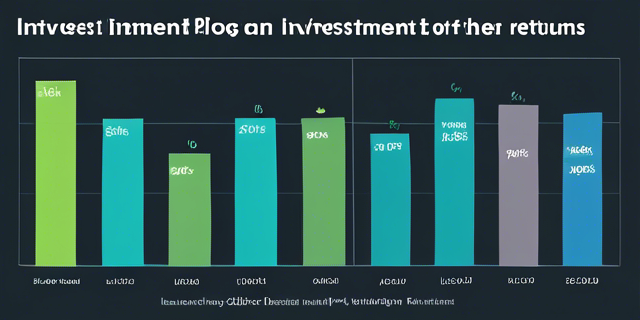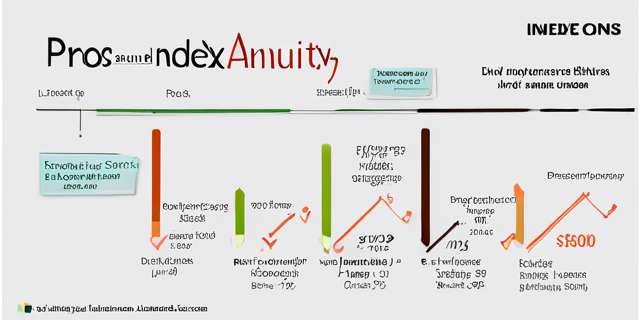Investing in Farmland and Agriculture: Unlocking Steady Returns
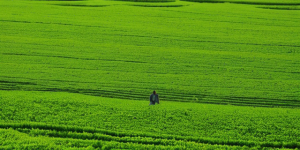
The Allure of Investing in Farmland and Agriculture
As investors seek diversification and long-term stability, the agricultural sector has emerged as an enticing prospect. Investing in farmland and agriculture offers a unique opportunity to tap into a fundamental human need – food production. With the world’s population continuing to grow, the demand for agricultural products is expected to rise steadily, making this industry an attractive choice for those seeking steady returns.
Understanding the Fundamentals of Farmland Investing
Before delving into the intricacies of investing in farmland and agriculture, it’s essential to grasp the core principles that underpin this asset class. Farmland is a tangible asset rooted in the earth, providing a sense of security that resonates with many investors. Unlike stocks or bonds, which can be subject to market volatility, farmland has an inherent value tied to its ability to produce crops and sustain agricultural operations.
The Timeless Appeal of Agricultural Investments
Investing in agriculture is not a new concept; it has been a cornerstone of human civilization for centuries. Throughout history, civilizations have thrived or faltered based on their ability to cultivate and harness the bounty of the land. In modern times, this age-old industry has evolved into a sophisticated and diverse sector, encompassing everything from crop production and livestock farming to agribusiness and food processing.
Factors Driving the Growth of Farmland Investing
Global Population Growth and Increasing Food Demand
One of the primary drivers behind the appeal of investing in farmland and agriculture is the relentless growth of the global population. As the world’s population continues to expand, the demand for food and agricultural products rises in tandem. This ever-increasing demand creates a fertile ground for investment opportunities in the agricultural sector.
According to the United Nations, the global population is projected to reach 8.5 billion by 2030 and nearly 10 billion by 2050. With more mouths to feed, the pressure on agricultural production intensifies, necessitating more efficient farming practices and increased investment in the sector.
Urbanization and the Shrinking Availability of Arable Land
As cities continue to expand and urbanization accelerates, the amount of arable land available for agricultural production is decreasing. This scarcity of farmland, coupled with the growing demand for food, creates a supply-demand imbalance that drives up the value of existing agricultural land.
Investors who acquire farmland strategically position themselves to benefit from this trend, as the limited supply of arable land increases the value of their holdings over time.
Climate Change and Environmental Concerns
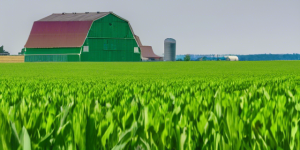
The impact of climate change on agriculture cannot be ignored. Rising temperatures, shifting weather patterns, and the increasing frequency of extreme weather events pose significant challenges to crop yields and livestock production. However, these challenges also present opportunities for innovation and investment in sustainable agricultural practices.
Investors who prioritize environmentally responsible farming methods and technologies can potentially mitigate risks associated with climate change while capitalizing on the growing demand for sustainable food production.
Investment Opportunities in Farmland and Agriculture
Direct Ownership of Farmland
One of the most straightforward ways to invest in farmland and agriculture is through direct ownership of agricultural land. This approach involves acquiring and managing farmland directly, either for personal use or as an investment property. Direct ownership offers investors complete control over the land and its operations, allowing them to make decisions regarding crop selection, farming methods, and potential diversification into ancillary businesses like agritourism or renewable energy production.
However, direct ownership also comes with significant responsibilities, such as managing labor, equipment, and crop yields, as well as navigating legal and regulatory requirements. For those without prior experience in agriculture, partnering with experienced farm managers or leasing the land to established farming operators may be a more practical approach.
Agricultural Real Estate Investment Trusts (REITs)
For investors seeking a more hands-off approach, Agricultural Real Estate Investment Trusts (REITs) provide an attractive opportunity. REITs are companies that own and operate income-producing real estate, including farmland and agricultural properties. By investing in these publicly traded REITs, individuals can gain exposure to a diversified portfolio of farmland assets without the responsibilities associated with direct ownership.
Agricultural REITs offer several benefits, such as professional management, diversification across multiple properties and geographic regions, and the potential for regular income distributions from rental payments or crop sales. However, it’s important to carefully evaluate the track record, management team, and underlying assets of any REIT before investing.
Farmland Investment Funds and Partnerships
Another popular investment vehicle in the agricultural sector is farmland investment funds and partnerships. These entities pool capital from multiple investors and use the collective resources to acquire and manage farmland properties. Investors become limited partners, benefiting from the expertise of professional fund managers and the diversification of owning a stake in multiple agricultural assets.
Farmland investment funds and partnerships often have a specific investment strategy, such as targeting certain crop types, regions, or farming practices. This focused approach allows investors to align their investments with their personal preferences or risk tolerance levels.
Agricultural Commodities and Futures
While not a direct investment in farmland, trading in agricultural commodities and futures can provide exposure to the agricultural sector. Commodities like corn, wheat, soybeans, and livestock are widely traded on futures exchanges, allowing investors to speculate on price movements or hedge against potential risks.
Investing in agricultural commodities and futures requires a thorough understanding of market dynamics, supply and demand factors, and the intricacies of futures trading. It’s often considered a more speculative approach compared to direct farmland ownership or investment in REITs and funds.
Evaluating the Risks and Rewards of Farmland Investing
Potential Risks and Challenges
Like any investment opportunity, investing in farmland and agriculture comes with its fair share of risks and challenges. Some of the key factors to consider include:
- Weather and Climate Risks: Agricultural operations are inherently vulnerable to adverse weather conditions, such as droughts, floods, or extreme temperatures, which can significantly impact crop yields and livestock production.
- Regulatory and Policy Changes: The agricultural sector is subject to various regulations and policies related to land use, environmental protection, labor practices, and trade agreements. Changes in these areas can impact the profitability and operational dynamics of farmland investments.
- Commodity Price Volatility: The prices of agricultural commodities can fluctuate due to factors like supply and demand imbalances, global trade dynamics, and geopolitical tensions. This volatility can directly affect the returns from farmland investments.
- Operating Costs and Labor Availability: The costs associated with farming operations, including labor, equipment, and inputs like fertilizers and pesticides, can significantly impact profitability. Securing a reliable and affordable labor force is also an ongoing challenge in many agricultural regions.
Mitigating Risks through Diversification and Due Diligence
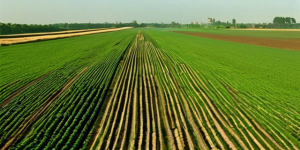
While the risks associated with farmland investing are real, they can be mitigated through proper diversification and thorough due diligence. Diversifying across multiple crop types, geographic regions, and investment vehicles can help reduce exposure to any single risk factor. Additionally, conducting comprehensive research on potential investments, including evaluating soil quality, water resources, and management teams, can help investors make informed decisions.
It’s also crucial to have a long-term investment horizon when it comes to farmland and agriculture. These assets tend to appreciate in value over extended periods, making them suitable for patient investors seeking steady returns and potential capital appreciation.
The Role of Technology in Modern Farming
Precision Agriculture and Data-Driven Farming
The integration of technology into modern farming practices has revolutionized the agricultural sector. Precision agriculture, which involves the use of advanced technologies like GPS, remote sensing, and data analytics, has enabled farmers to optimize crop yields, reduce input costs, and minimize environmental impact.
By leveraging data-driven insights, farmers can make informed decisions about planting, irrigation, fertilization, and pest management, resulting in more efficient and sustainable farming practices. This technological advancement not only enhances profitability but also aligns with the growing demand for environmentally responsible agricultural practices.
Sustainable Farming Practices and Renewable Energy
In addition to precision agriculture, the adoption of sustainable farming practices and renewable energy sources is gaining traction in the agricultural sector. These initiatives not only contribute to environmental conservation but also offer potential cost savings and revenue diversification opportunities for farmland investors.
Sustainable farming practices, such as crop rotation, cover cropping, and integrated pest management, can improve soil health, reduce erosion, and minimize the need for synthetic inputs. Furthermore, the integration of renewable energy sources like solar or wind power can help offset energy costs and potentially generate additional revenue streams through the sale of excess energy.
Agribusiness and Food Technology Innovations
Beyond traditional crop and livestock production, the agricultural sector encompasses a vast array of agribusiness and food technology innovations. From vertical farming and indoor agriculture to plant-based protein alternatives and food waste reduction technologies, these advancements offer new investment opportunities and potential for disruptive growth.
Investors with a keen eye for innovation and a willingness to explore emerging trends can position themselves at the forefront of these exciting developments, potentially capitalizing on the evolving consumer preferences and market dynamics shaping the future of food production and distribution.
The Global Landscape of Farmland Investing
Regional Opportunities and Considerations
Farmland investing opportunities exist across the globe, each region presenting its unique set of advantages and challenges. For example, regions like the United States, Canada, and Australia offer established agricultural sectors, favorable regulatory environments, and robust infrastructure. However, these markets may also come with higher land prices and competition for prime farmland.
Conversely, emerging markets in regions like South America, Africa, and parts of Asia offer potentially lower entry costs and untapped growth potential. However, these regions may also face challenges related to political stability, infrastructure development, and regulatory frameworks.
Thorough research and due diligence are crucial when evaluating farmland investment opportunities in different regions. Factors such as soil quality, water availability, climate patterns, and local market dynamics should be carefully assessed to make informed investment decisions.
Collaboration and Partnerships with Local Communities
Successful farmland investments often involve collaboration and partnerships with local communities. Building strong relationships with indigenous populations, respecting their cultural traditions, and fostering sustainable development practices can create a win-win scenario for investors and local stakeholders alike.
By engaging with local communities, investors can gain valuable insights into local farming practices, labor availability, and potential challenges or opportunities specific to the region. Additionally, supporting local economic development and promoting responsible stewardship of natural resources can enhance the long-term sustainability and profitability of farmland investments.
Conclusion
Investing in farmland and agriculture offers a unique opportunity to tap into a fundamental human need while potentially generating steady returns over the long term. As the global population continues to grow and the demand for food rises, the agricultural sector is poised for sustained growth and investment opportunities.
However, investors must carefully navigate the risks and challenges associated with this asset class, such as weather and climate risks, regulatory changes, and commodity price volatility. Diversification, due diligence, and a long-term investment horizon are crucial for mitigating these risks and maximizing the potential rewards.
The integration of technology and sustainable practices into modern farming further enhances the appeal of farmland investing, as precision agriculture, renewable energy, and agribusiness innovations offer new avenues for efficiency, cost savings, and revenue diversification.
Ultimately, the decision to invest in farmland and agriculture should align with an individual’s investment objectives, risk tolerance, and personal values. By carefully weighing the risks and rewards, and diligently researching potential opportunities, investors can position themselves to benefit from the timeless and essential nature of agricultural production while contributing to a more sustainable and food-secure future.
FAQs (Frequently Asked Questions)
Is farmland a good investment for retirement planning?
A1: Farmland can be an excellent addition to a well-diversified retirement portfolio. Its ability to generate steady income and potentially appreciate in value over the long term makes it an attractive investment for those seeking reliable returns during retirement. However, it’s important to consider factors such as your risk tolerance, investment horizon, and overall investment strategy before allocating a significant portion of your retirement savings to farmland.
How can I get started with investing in farmland?
A2: There are several ways to get started with farmland investing, including direct ownership, investing in agricultural REITs or investment funds, or trading in agricultural commodities and futures. It’s advisable to begin by thoroughly researching the different investment vehicles and understanding the risks and commitments associated with each approach. Consulting with a financial advisor or seeking guidance from experienced farmland investors can also provide valuable insights.
What are some sustainable farming practices that can enhance farmland investments?
A3: Sustainable farming practices that can enhance farmland investments include crop rotation, cover cropping, integrated pest management, precision agriculture techniques, and the adoption of renewable energy sources like solar or wind power. These practices can improve soil health, reduce input costs, minimize environmental impact, and potentially generate additional revenue streams.
How does the global demand for food affect farmland investing?
A4: The global demand for food is a major driver behind the appeal of farmland investing. As the world’s population continues to grow, the demand for agricultural products rises, creating opportunities for investors in the farmland and agricultural sector. This increasing demand can lead to higher commodity prices and potentially greater returns for those invested in farmland and related assets.
What are some unique opportunities within the agribusiness and food technology sectors?
A5: The agribusiness and food technology sectors offer a range of unique investment opportunities, such as vertical farming, indoor agriculture, plant-based protein alternatives, food waste reduction technologies, and advancements in food processing and distribution. These innovations cater to evolving consumer preferences and address challenges related to sustainability, resource efficiency, and food security, presenting potential avenues for disruptive growth and investment returns.

